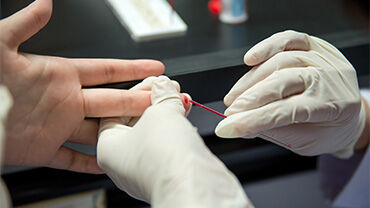Treatment as prevention: U.S. CDC introduces clinical guidance on pre-exposure prophylaxis for HIV
The U.S. Centers for Disease Control and Prevention published clinical practice guidelines on pre-exposure prophylaxis (PrEP) for the prevention of HIV. In EU, most countries lack implementation data and formal licensure and guidelines.
On 14 May 2014, the U.S. Centers for Disease Control and Prevention published clinical practice guidelines on pre-exposure prophylaxis (PrEP) for the prevention of HIV. These guidelines include recommendations for certain groups that are at higher risk for HIV infection, including men who have sex with men (MSM), heterosexually-active men and women, people who inject drugs and HIV negative men and women whose partners are HIV positive.
PrEP is recommended as a method to prevent or at least reduce the risk of HIV infection in adults who have not been infected with the virus but are at high risk of getting it. The treatment includes the daily use of oral antiretrovirals (containing tenofovir and usually also emtricitabine) in order prevent the virus from establishing a permanent infection. As such, PrEP is an antiretroviral therapy-based HIV prevention strategy which merits some mention.
ECDC comment on PrEP in Europe
The United States issued interim guidelines on the use of PrEP for MSM at high risk for HIV infection since the Food and Drug Administration approved it in 2012. The new guidelines issued in May 2014 hence formalise and expand the interim guidelines to other groups at high risk of HIV acquisition.
There is currently no common approach on PrEP across Europe. In 2012, the British HIV Association/British Association for Sexual Health and HIV issued guidelines on the use of PrEP in the UK. And the medication used for PrEP (Truvada®) is currently only approved in the EU for routine antiretroviral therapy (ART) use after HIV infection, not for PrEP.
Despite some encouraging results, a number of questions remain unanswered regarding PrEP. For example, the cost-effectiveness of PrEP in the long term requires further investigation, as it is likely to depend on high levels of adherence to the treatment. In addition, the potential side effects for individuals receiving antiretrovirals even though they are not HIV positive and are not in need of ART for their own health, as well as the potential risk of developing drug-resistance must also be considered. What is more: if ART initiation before HIV infection were to result in reduced condom use, it is not clear whether the overall transmission risk would be reduced or increased as a result.
Conclusion
PrEP shows promising prospects for inclusion in the ‘HIV prevention toolbox’ in Europe. This could be particularly effective for persons at very high risk of HIV acquisition, such as sexual or injecting partners of people living with HIV – as highlighted in the ECDC report Evaluating HIV treatment as prevention in the European context (page 34). However, implementation data and formal licensure and guidelines are still lacking in most EU countries. This makes it difficult to provide a clear recommendation at present that would apply to the entire European Union. ECDC will continue to follow this strategy closely in collaboration with sister agencies, the Member States and the European Commission. Future research needs in the use of ART for prevention of HIV transmission should focus on obtaining the evidence on the efficacy of ART in reducing onward sexual transmission in the wider population. Secondly, there is a need to understand the impact of the early ART strategy on condom use.






